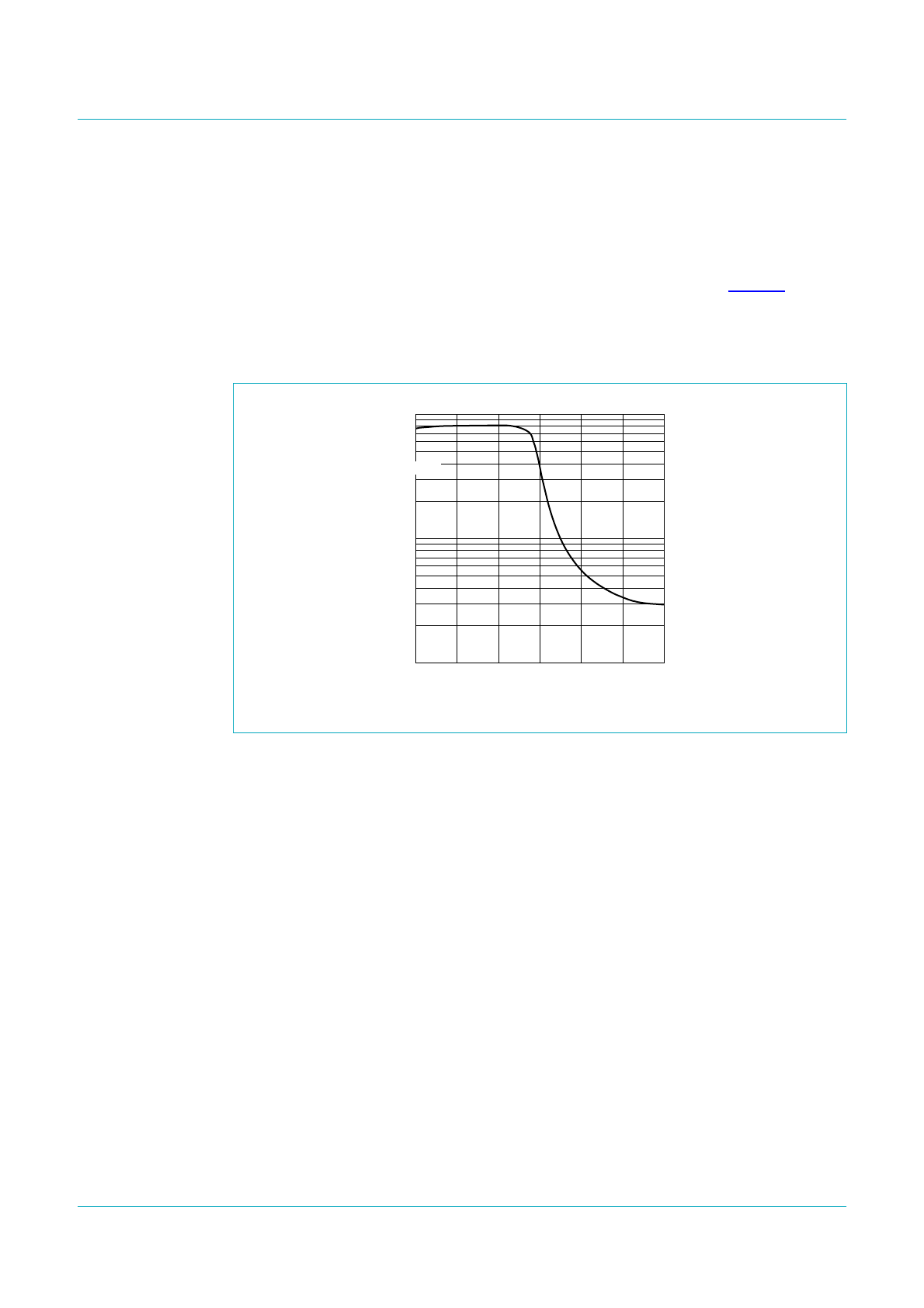
TZA3046_1 © Koninklijke Philips Electronics N.V. 2006. All rights reserved.
Product data sheet Rev. 01 — 19 May 2006 7 of 15
Philips Semiconductors
TZA3046
Fiber Channel/Gigabit Ethernet transimpedance amplifier
For applications where the transimpedance is controlled by the TIA it is advised to leave
the AGC pads unconnected to achieve fast attack and decay times.
The AGC function can be overruled by applying a voltage to pad AGC. In this
configuration, connecting pad AGC to ground gives maximum transimpedance and
connecting it to V
CC
gives minimum transimpedance. This is depicted in Figure 7. The
AGC voltage should be derived from the V
CC
for proper functioning.
For maximum freedom on bonding location, 2 pads are available for AGC (pads 6 and 15).
These pads are internally connected. Both pads can be used if necessary.
7.3 Monitoring RSSI via IDREF_MON
To facilitate RSSI monitoring in modules (e.g. SFF-8472 compliant SFP modules), a
current output is provided. This output gives a current which is 20 % of the average DREF
current through the 290 Ω bias resistor. By connecting a resistor to the IDREF_MON
output, a voltage proportional to the average input power can be obtained.
The RSSI monitoring is implemented by measuring the voltage over the 290 Ω bias
resistor. This method is preferred over a simple current mirror because at small photo
currents the voltage drop over the resistor is very small. This gives a higher bias voltage
yielding better performance of the photodiode.
For maximum freedom on bonding location, 2 pads are available for IDREF_MON (pads 5
and 16). These pads are internally connected. Both pads can be used if necessary. If only
one is used, the other can be left open.
Fig 7. Transimpedance as function of the AGC voltage
001aae517
V
AGC
/V
CC
0.3 0.90.70.5
1
10
transimpedance
(kΩ)
10
−1

















